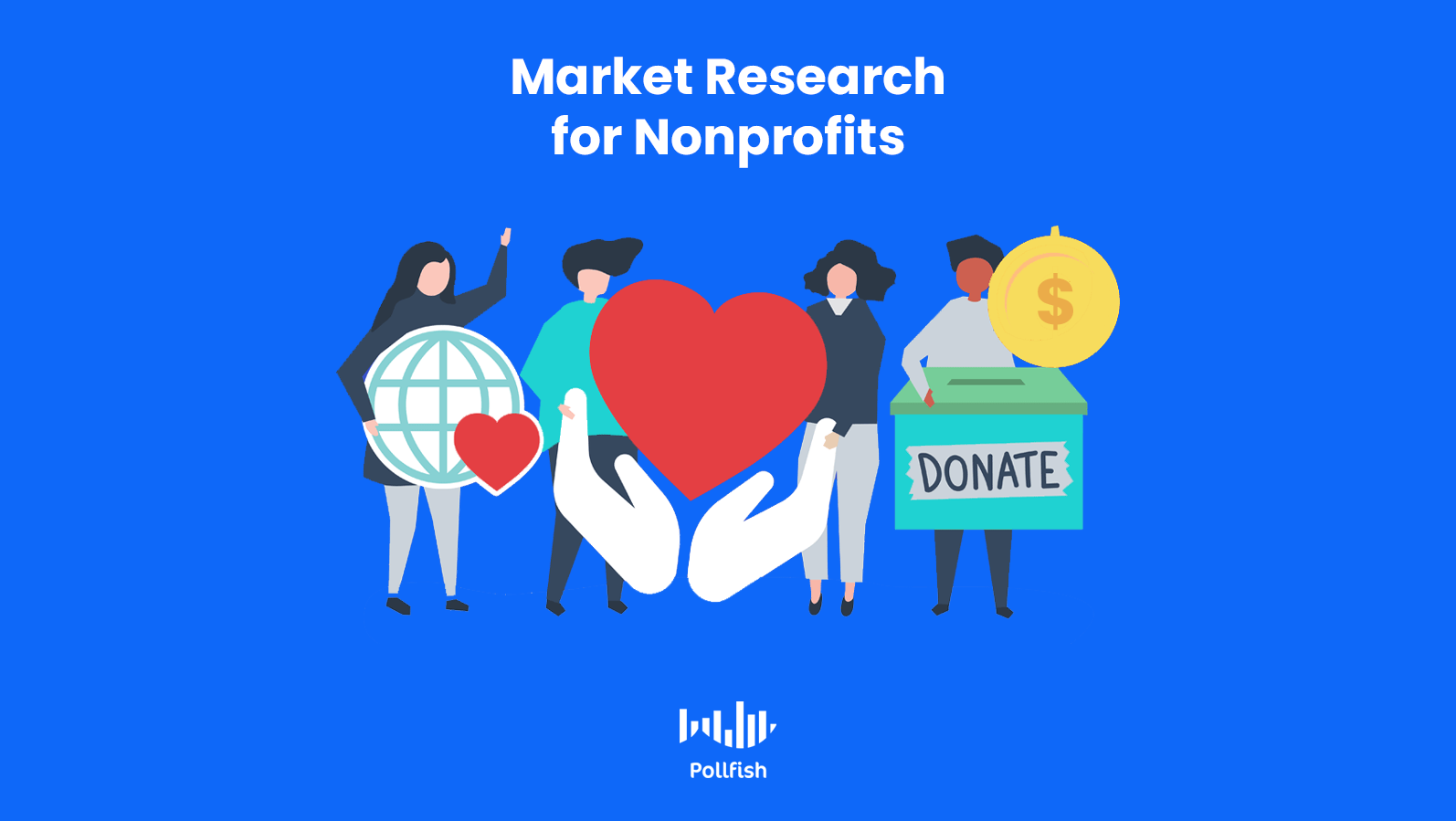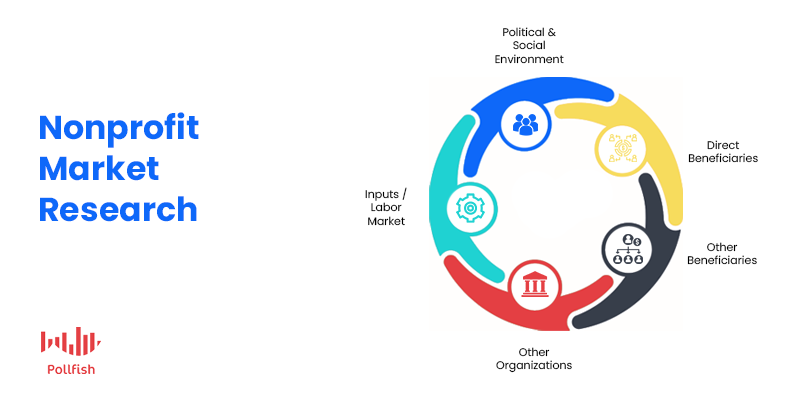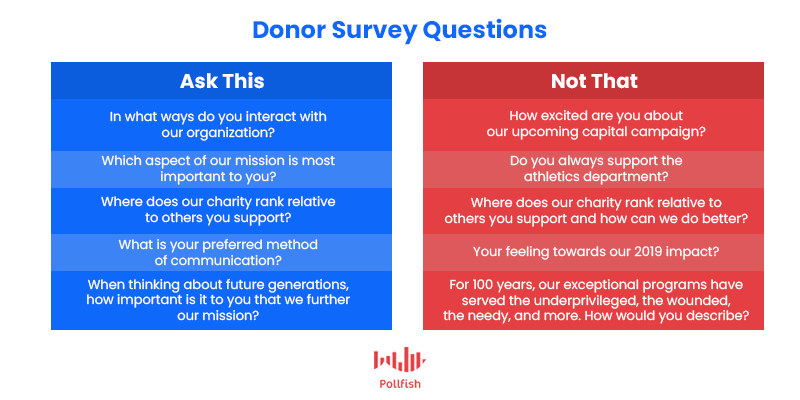How to Conduct Market Research for Nonprofits Like a Pro

Market research for nonprofits is a necessary action that can help you secure funding and remain financially stable. With over 1.5 million nonprofits operating in the United States, competition for funding is fierce. To make things even more challenging, in recent years the donor retention rate has hovered around 40%.
Nonprofits cannot assume that existing donors will continue to support them. They must find innovative ways to demonstrate the value of their organization in order to secure new donors and retain existing ones.
By better understanding your target audience, you can create a more effective strategy to connect with your supporters, understand them better, rap in more funds and dutifully support your cause. In this guide, we will help you understand how to conduct market research like a pro, with a few key takeaways to help you get your market research started on the right foot.
The Purpose of Market Research for Nonprofits

There are several reasons why an NPO may consider undertaking market research, but all of these reasons lead back to the same goal, to ensure that enough funding is secured to keep the organization running. There is a finite amount of money that can be sourced from your supporters; market research can help inform and strengthen aspects of your overall funding strategy.
The main purpose of market research for nonprofits, therefore, is to understand their donors’ demographics and preferences. By understanding this, NPOs can find more effective ways to reach donors and improve ROI for marketing campaigns, which are almost always run on a tight budget.
While the purpose of market research is to better understand your audience, you will need to be more specific about the objectives of your market research in order to gain insights that you can use. Consider exactly what you hope to achieve before you get started. You may consider undertaking market research for some or all of the following reasons:
- Gain a better understanding of your donor base. Understanding the characteristics of your existing donors will allow you to make informed decisions for your nonprofit.
- Grow your brand. Insights about your existing supporters and those in your target audience can help you develop your brand to make it more appealing to your base.
- Improve communication with your supporters. An effective communication strategy is essential to retain existing donors and encourage them to give year-to-year. By understanding your supporters more deeply, you will be able to create more targeted messages to the various segments.
- Enhance your marketing efforts. Use insights gained about your support base to improve your marketing efforts by creating campaigns that will speak to your base. When operating with a smaller marketing budget, it is vital to achieve optimal conversion rates and ensure marketing funds are well spent.
- Leverage your base to test new approaches. Connect with your existing supporters to trial news ideas before making big changes to your marketing strategy or your mission.
- Measure current communications and campaigns with your supporter base. Gauge the reception of existing communications and level of frequency with your supporter base.
- Compare your nonprofit with others in your niche. Understand how you measure up to other players in the field to ensure you remain attractive to prospective donors.
- Measure brand awareness. Observe how aware or receptive your target market is to your nonprofit so you can make adjustments and increase your audience.
- Ensure that you are operating in a cost-effective manner. Every penny counts. Understanding your audience will ensure optimal ROI on each marketing campaign and initiative you undertake.

The Makeup of Market Research
Your market research project will cover two types of research: primary and secondary. The objective(s) of your market research project will dictate the selection of primary and secondary sources that you need.
Primary Research
Primary research involves gathering and analyzing data from first-hand sources. This means that the information you gather during primary research will be highly relevant and unique to your organization. The primary research methods for nonprofits are:
- Surveys of existing and/or targeted supporters
- Interviews (in person or by phone)
- Focus groups
- User testing (for example, if trialing a new social media or email campaign)
Primary research is an essential tool to better understand your existing donors. Primary research can help you explore aspects such as their reasons for giving, how your brand makes them feel, and what will motivate them to give again.
Secondary Research
When conducting secondary research, you will gather and examine information that is already published and publicly available. Examples of secondary research include:
- Market research papers
- Case studies and white papers
- Research agencies
- Statistic sites
- Industry reports
- Government statistics
- SEO and keyword research
- Trends sites (e.g. Google Trends)
- Websites of other nonprofits operating in a similar sphere
There is a wealth of information readily available for nonprofits – the trick is to identify which of this information is applicable to your organization.
Secondary Research Sources for Nonprofits
To help kickstart your market research, we have compiled a list of secondary research sources for the nonprofit sector.
- NCCS data – The National Center for Charitable Statistics (NCCS) is a vital source of free information and statistics about nonprofits. In order to make sense of the huge amount of data available here, start by reading the Beginner’s Guide to Using NCCS Data.
- The Nonprofit Sector in Brief 2019 – The NCCS publishes a yearly report that provides an overview of the nonprofit sector in the United States. The report includes info on key aspects of the sector, such as size and scope, types of organizations, and donation amounts.
- IRS’s Nonprofit Tax Statistics – The IRS publishes statistics about the tax-exempt sector that can be used to better understand both recent trends and historical data.
- Statista – An excellent source of statistics on any topic imaginable, Statista has a sizeable collection of nonprofit statistics. There is some free information about nonprofits available, while their dossier on nonproft organizations in the United States provides an in-depth view on the sector.
- Propublica’s Nonprofit Explorer – This tool lets you view tax returns for certain tax-exempt organizations in the United States. This information can be used to give you a better understanding of businesses with similar operating models.
Drive Your Market Research with First-Hand Insights
While secondary research provides a strong understanding of the nonprofit sector, primary research is highly necessary to understand how your target market thinks and behaves.
Fortunately, nonprofits have something that many other companies do not — an enthusiastic audience that has already demonstrated a commitment to your brand. Finding a way to reach these supporters and leverage their opinions can help you form future decisions, whether they be monetary, communications-based or deal with outreach.
Whether you have a large existing donor base or a small one, online surveys are a cost-effective way to gather information that can help improve your organization. Use social media or email to ask your supporters to participate in surveys, focus groups, and interviews; after all, this group of people should feel motivated to help you.
The involvement of existing donors in your market research project can help you make much more sense of the data you will accumulate. When you combine survey data on the sector, and you’ll be on your way to more certain financial stability.
Frequently asked questions
What is market research for nonprofits?
Market research for nonprofits is the process of better understanding the target market for a nonprofit to help secure funding and remain financially viable.
How can nonprofits benefit from market research?
Nonprofits can benefit from market research in a variety of ways, such as gaining a better understanding of existing donors, improving communications with existing and potential supporters, improving marketing efforts, and growing their brand.
What types of primary research are beneficial when conducting market research for nonprofits?
The most relevant types of primary research for nonprofits are surveys, interviews, focus groups, and user testing.
How can nonprofits use secondary research sources to support a market research project?
Nonprofits can examine published data in order to better understand trends and statistics in order to see how they compare to other nonprofits in their sector.
How are surveys used to drive market research for nonprofits?
Nonprofits tend to have an involved and interested user base. These individuals are more likely to participate in surveys and provide valuable responses that can help shape future campaigns to secure funding and donor retention rates.
Pollfish Marketing Team
Ready to Try Pollfish?
Create your survey with AI, target high-quality respondents starting at $0.95 per complete, and start getting results in just minutes in real-time. From running a simple product concept survey to managing a constant stream of trackers for dozens of clients in dozens of countries, we’ve got you.
